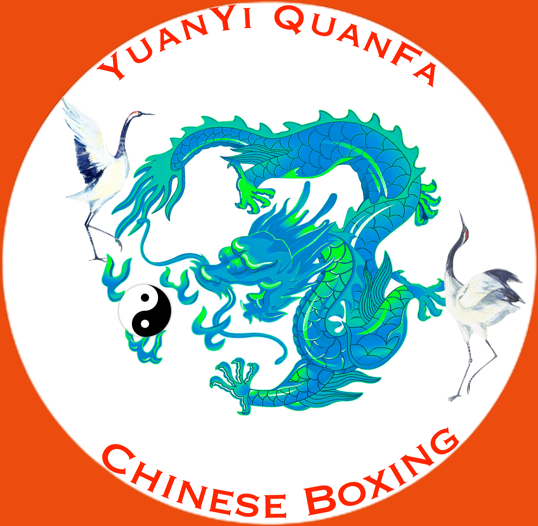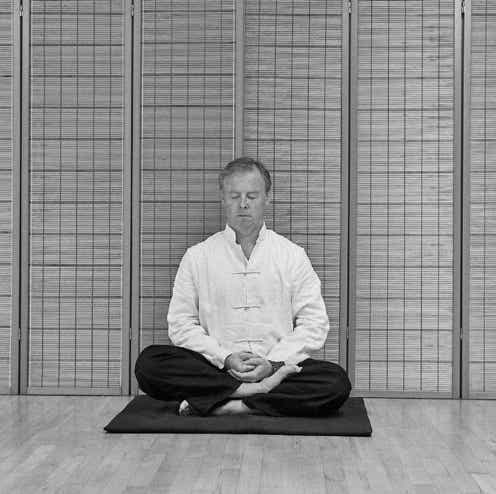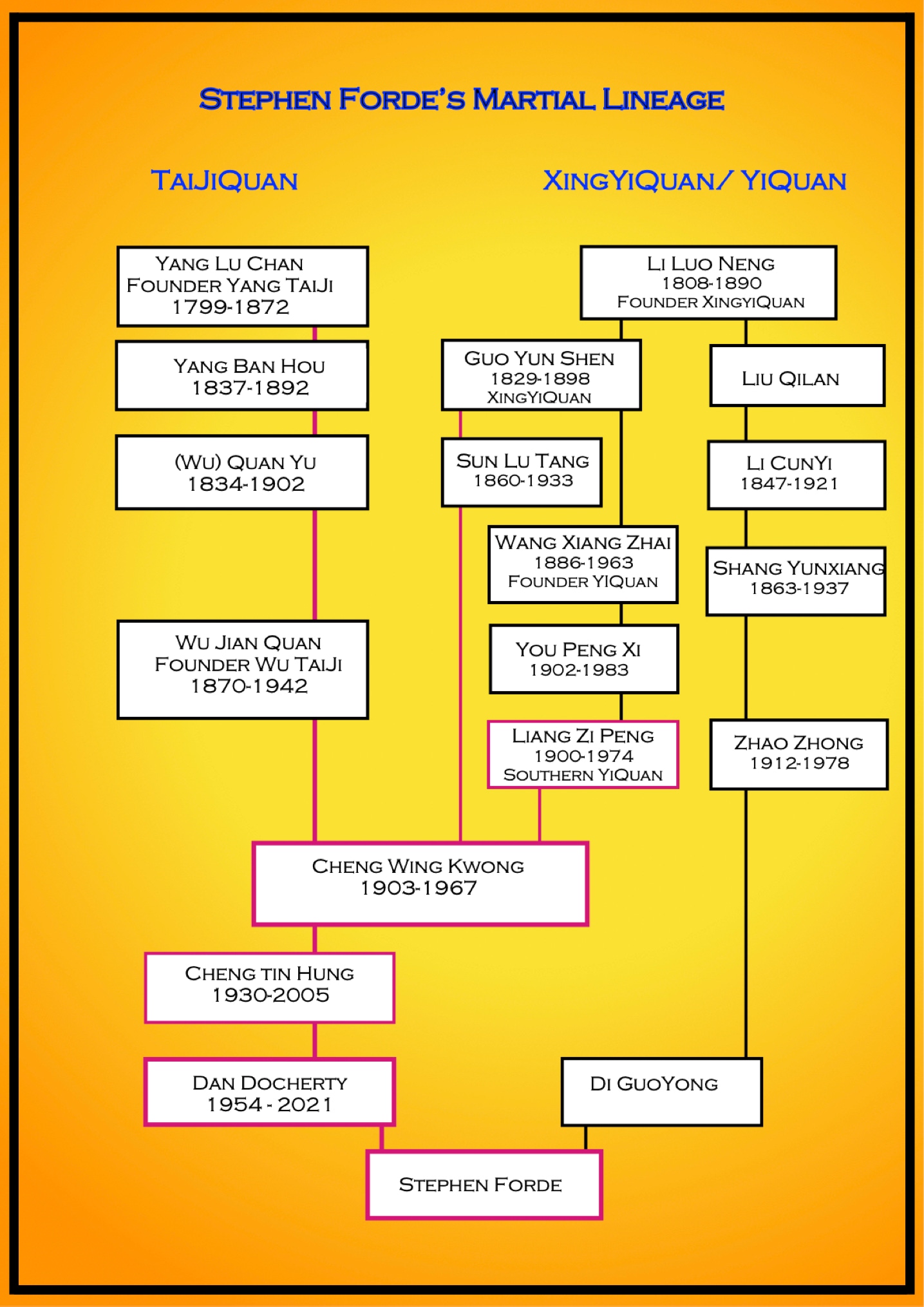
YuanYi QuanFa
Traditional Chinese Boxing

YuanYi QuanFa: Lineage
Lineage Chart
The History of Chinese Martial Arts is both complex and not without controversy. The chart below is an illustration of my martial “family tree” this is known as a lineage, it is slightly abbreviated for clarity. The people named, connected via the pink lines, are my direct lineage predecessors, because I was a lineage student of the late Dan Docherty. Being a lineage student indicates that I was accepted as what is known as an “Inside The Door Student”, which means I received direct, private instruction that is not available in public classes.
You can see in the chart that Cheng Wing Kwong was a student of several different schools, it his his influence which, I believe, in part explains how this branch of TaJiQuan differs from more mainstream TaiJi schools. He was responsible for establishing the importance of Nei Gong training and other supplementary training drills. He was famous for his ability to withstand full power strikes to his body.
Both my teacher Dan Docherty and his teacher; Cheng Tin Hung took the decision to not use the “Wu” family name in their schools’ names, something that they were entitled to do if they so chose. They both did this because they rejected the concept of family inheritance of schools as it can be damaging to a school if a person of low ability inherits a school because of ‘birth right’. I follow the same reasoning.
I use the name YuanYi QuanFa in relation to the martial art that I teach because my training regime is syncretic in that it combines basic aspects of Shaolin Kung Fu as an introduction, then develops core elements of XingYiQuan (YiQuan) that can be combined with TaiJiQuan and therefore differs from other TaiJi schools; I focus my training on essential foundation skills and conditioning rather than accumulation of numerous forms. The hundreds of forms that are now studied are modern creations, while entertaining and pleasant to watch, they add little to martial skill or obtaining health. The second difference is the focus on the importance of “Yi” (Intent / Will) and sound physical structure in training, this is why I use the core training of XingYi / YiQuan within TaiJi training. I say core XingYi because, rather like TaiJi in recent years, XingYi has also been afflicted with the creation of unnecessary drills and forms.


Dan Docherty, my TaJiQuan teacher passed away at the end of 2021. Dan was my only Taiji teacher, I started to study with Dan in the 1980’s and while I was and still am happy to train and practice with other schools I never felt the need to find another teacher. His teaching was always open and honest and most importantly he taught me how to understand and analyse Taiji and its martial application. Like all good teachers he taught his students to think for themselves.